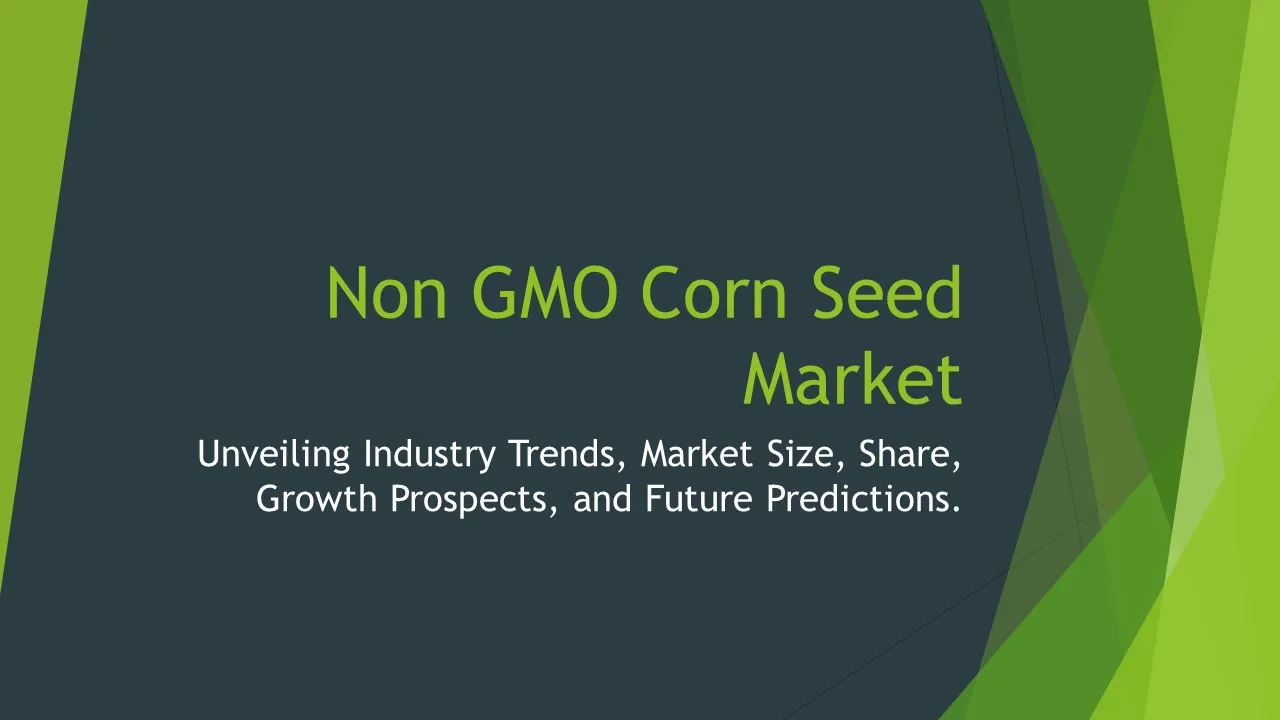Blood Meal Sales
Blood Meal Market Segments - by Product Type (Spray Dried Blood Meal, Drum Dried Blood Meal, Extruded Blood Meal, Solar Dried Blood Meal, Freeze Dried Blood Meal), Application (Animal Feed, Fertilizers, Pharmaceuticals, Pet Food, Others), Distribution Channel (Online Stores, Supermarkets/Hypermarkets, Specialty Stores, Direct Sales), Ingredient Type (Poultry Blood Meal, Porcine Blood Meal, Ruminant Blood Meal, Aqua Blood Meal, Others), and Region (North America, Europe, Asia Pacific, Latin America, Middle East & Africa) - Global Industry Analysis, Growth, Share, Size, Trends, and Forecast 2025-2035
- Report Preview
- Table Of Content
- Segments
- Methodology
Blood Meal Sales Market Outlook
The global blood meal market is projected to reach a value of approximately USD 1.7 billion by 2035, expanding at a robust compound annual growth rate (CAGR) of 5.5% during the forecast period from 2025 to 2035. The increasing demand for high-protein animal feed, along with the growing trend of sustainable agricultural practices that favor organic fertilizers, are key drivers propelling market growth. Moreover, the rising global population and the subsequent increase in meat consumption are driving the need for efficient livestock nutrition, further boosting the demand for blood meal. Additionally, the pharmaceutical industry's growing interest in blood meal as a raw material for bioactive compounds is creating new opportunities for market expansion. The versatility of blood meal in various applications, including fertilizers and food products, adds to its attractiveness among consumers looking for natural and efficient solutions.
Growth Factor of the Market
The blood meal market is experiencing significant growth due to several factors, including the increasing awareness of the nutritional benefits associated with blood meal as a protein supplement. With a high protein content ranging from 85% to 90%, blood meal is becoming an essential ingredient in animal feed formulations, particularly in the poultry and aquaculture sectors. Furthermore, the rising focus on sustainable farming practices and organic fertilizers is driving demand for blood meal as an eco-friendly alternative to synthetic fertilizers. Governments and agricultural organizations are also promoting the use of by-products from the meat processing industry, which includes blood meal, thereby fostering market growth. Additionally, advancements in processing technologies are enhancing the quality and shelf life of blood meal, making it more appealing to end-users. The increasing prevalence of pet ownership is further contributing to the demand for blood meal in pet food formulations, indicating a broadening market scope.
Key Highlights of the Market
- The global blood meal market is projected to reach USD 1.7 billion by 2035.
- The market is expected to grow at a CAGR of 5.5% from 2025 to 2035.
- The rising demand for sustainable agricultural solutions is driving market expansion.
- Blood meal is gaining traction as a high-protein ingredient in animal feed and pet food.
- Technological advancements in processing are improving the quality and marketability of blood meal.
By Product Type
Spray Dried Blood Meal:
Spray dried blood meal is one of the most commonly used forms of blood meal, produced by spraying liquid blood into a heated chamber, where the water evaporates rapidly. This method preserves the nutritional quality of the blood while resulting in a fine powder that can easily be incorporated into animal feed. The high protein content and rapid digestibility of spray dried blood meal make it particularly beneficial for young and growing livestock. Furthermore, its ability to enhance the palatability of feed rations contributes to increased feed intake and improved growth rates, making it a preferred choice among livestock producers.
Drum Dried Blood Meal:
Drum dried blood meal is produced using a drum drying method, where blood is spread onto a heated drum and dried as it rotates. This process typically results in a coarser texture compared to spray dried blood meal. Drum dried blood meal retains a high protein content and is favored for its cost-effectiveness and ease of handling. It is often utilized in large-scale animal feeding operations where bulk availability and lower costs are critical. Additionally, its relatively stable nutrient profile makes it a reliable ingredient in feed formulations.
Extruded Blood Meal:
Extruded blood meal undergoes a process that involves cooking and forcing the blood through a die, which results in a high-protein product with a unique texture. This method not only enhances the digestibility of the protein but also reduces the microbial load, making it a safer option for animal consumption. Extruded blood meal is particularly valued in aquaculture and pet food applications for its high nutritional value and excellent amino acid profile. Its use in aquaculture feeds supports optimal growth and health of aquatic species, aligning with the increasing demand for efficient protein sources in the sector.
Solar Dried Blood Meal:
Solar dried blood meal is produced using natural sunlight as a drying method, making it an environmentally friendly option. This method is typically employed in regions with abundant sunlight, where the cost of energy can be a significant factor in production. The solar drying process results in a product that retains many of the nutrients found in fresh blood, although the drying time can be longer compared to other methods. Solar dried blood meal is often marketed as an organic product, appealing to consumers who prioritize sustainability and natural sourcing in their animal feed choices.
Freeze Dried Blood Meal:
Freeze dried blood meal is created through a method that involves freezing the liquid blood and then removing moisture under vacuum conditions. This process preserves the bioactive compounds and nutrient integrity of the blood meal, making it an excellent choice for high-end applications in pharmaceuticals and specialty animal feeds. The ability to retain the original properties of the blood adds value to freeze dried blood meal, allowing it to command a premium price in the market. As the demand for high-quality, nutrient-rich products continues to grow, freeze dried blood meal is likely to see increased adoption across various sectors.
By Application
Animal Feed:
Blood meal is predominantly utilized in the animal feed sector due to its exceptional protein content and digestibility. It serves as a high-quality protein supplement for livestock, poultry, and aquaculture. The inclusion of blood meal in feed formulations enhances the nutritional profile, promoting better growth rates and overall animal health. With the increasing demand for protein-rich diets from livestock, blood meal has gained popularity as a cost-effective alternative to traditional protein sources such as soybean meal or fish meal. Furthermore, its palatability encourages higher feed intake, contributing to improved feed efficiency and productivity in animal husbandry.
Fertilizers:
Another significant application of blood meal is as a nitrogen-rich organic fertilizer. Blood meal releases nitrogen slowly into the soil, promoting healthy plant growth and enhancing soil fertility. As consumers increasingly seek sustainable and environmentally friendly alternatives to synthetic fertilizers, blood meal is gaining traction in the organic farming sector. Its ability to improve soil structure and microbial activity makes it an excellent amendment for a variety of crops. Additionally, the increasing awareness of the benefits of organic farming among consumers has led to a surge in demand for blood meal as a natural fertilizer solution.
Pharmaceuticals:
In the pharmaceutical industry, blood meal is valued for its bioactive compounds with potential health benefits. It serves as a source of proteins and peptides that can be utilized in the development of dietary supplements, nutraceuticals, and other health-related products. The increasing focus on health and wellness among consumers is driving the demand for natural ingredients, positioning blood meal as a desirable component in various pharmaceutical formulations. Research into the potential therapeutic uses of blood meal components continues to evolve, indicating a promising future for this application segment.
Pet Food:
Blood meal is increasingly being incorporated into premium pet food formulations due to its high protein content and digestibility. As pet owners seek to provide their pets with nutritious and balanced diets, the demand for high-protein ingredients like blood meal is on the rise. Blood meal can enhance the palatability and nutritional profile of pet food, making it an attractive choice for manufacturers looking to differentiate their products in a competitive market. Additionally, the trend towards natural and holistic pet food options aligns perfectly with the benefits that blood meal offers, further driving its adoption in this application.
Others:
Beyond traditional applications, blood meal is finding its way into various niche markets, including aquaponics, biofuel production, and cosmetics. Its high protein content and amino acid profile can contribute to diverse formulations across these sectors. In aquaponics systems, blood meal serves as a sustainable protein source for fish and plants alike, promoting a closed-loop ecosystem. In biofuel production, the protein from blood meal can potentially be converted into biofuels or biogas, supporting efforts toward renewable energy sources. The cosmetics industry is also exploring the usage of blood meal for its protein-rich content, bolstering the market's versatility and innovation potential.
By Distribution Channel
Online Stores:
The rise of e-commerce has significantly transformed the distribution landscape for blood meal. Online stores offer consumers the convenience of purchasing products from the comfort of their homes, which has become particularly appealing during and post-pandemic. E-commerce platforms provide access to a wider range of blood meal products, catering to diverse consumer needs, including bulk purchases for agricultural use and specialty products for niche markets. Additionally, online channels facilitate easy comparison of prices and product specifications, allowing consumers to make informed purchasing decisions. As internet penetration continues to grow globally, the online segment of the blood meal market is expected to expand rapidly.
Supermarkets/Hypermarkets:
Supermarkets and hypermarkets play a crucial role in the distribution of blood meal, especially in regions where consumers prefer to purchase their agricultural products in bulk. These retail outlets often feature dedicated sections for organic and specialty feeds, showcasing blood meal as a high-protein option for livestock and pets. The visibility and accessibility of blood meal in supermarkets enhance consumer awareness and drive sales, given that many shoppers appreciate the convenience of one-stop shopping for their agricultural and pet food needs. In addition, these stores often engage in promotional strategies, such as discounts and loyalty programs, to encourage purchases, further bolstering market growth.
Specialty Stores:
Specialty stores focusing on organic and natural products are pivotal in promoting blood meal to niche markets. These stores often cater to health-conscious consumers and organic farmers looking for high-quality nutritional supplements. Blood meal’s positioning as a natural protein source aligns with the ethos of specialty retail, attracting customers who prioritize sustainability and premium ingredients. The knowledgeable staff in these stores can provide valuable insights into the benefits and uses of blood meal, fostering customer trust and loyalty. As awareness of sustainable agriculture continues to rise, specialty stores are likely to see increased sales of blood meal products.
Direct Sales:
Direct sales from manufacturers to consumers or farmers play a significant role in the blood meal market, particularly for large-scale agricultural operations. This distribution model enables producers to establish direct relationships with their customers, providing tailored solutions and bulk ordering options. It also allows for better price negotiation and reduced intermediaries, making blood meal more affordable for end-users. Many manufacturers are adopting direct sales strategies through their websites or dedicated sales teams to streamline the purchasing process. This approach not only increases profitability for the producers but also ensures that quality control is maintained throughout the supply chain.
By Ingredient Type
Poultry Blood Meal:
Poultry blood meal is a by-product derived from processing poultry meat and is recognized for its rich protein content, making it an ideal ingredient for animal feed formulations, particularly in poultry diets. This type of blood meal is highly digestible and provides essential amino acids necessary for optimal growth and performance. Poultry blood meal is often utilized in feed for broilers, layer hens, and other poultry types to enhance nutritional value and promote better feed conversion ratios. The increasing poultry production worldwide, driven by rising meat consumption, is consequently boosting the demand for poultry blood meal as a cost-effective protein source.
Porcine Blood Meal:
Porcine blood meal is derived from pig processing and serves as a high-protein supplement in animal feeds, particularly for swine. The nutrient profile of porcine blood meal is tailored to meet the specific dietary needs of pigs, providing them with essential nutrients that support growth and reproduction. As the global demand for pork continues to rise, the porcine blood meal market is witnessing significant growth. Furthermore, it is utilized in pet food formulations to enhance protein levels, catering to the evolving consumer preference for high-quality pet nutrition.
Ruminant Blood Meal:
Ruminant blood meal is produced from the blood of cattle and sheep and is known for its high protein content and nutrient density. It is specifically formulated to meet the dietary requirements of ruminant animals, such as cows and goats. The inclusion of ruminant blood meal in the feed of these animals enhances their growth rates, milk production, and overall health. As the demand for dairy and beef products continues to soar globally, the ruminant blood meal segment is expected to experience robust growth. Additionally, its valuable amino acid profile helps improve the nutritional balance in ruminant diets, making it a sought-after ingredient.
Aqua Blood Meal:
Aqua blood meal is specifically designed for aquaculture applications, providing essential nutrients to fish and other aquatic organisms. This type of blood meal is rich in protein and omega-3 fatty acids, making it an attractive feed ingredient that supports the growth and health of aquatic species. As global aquaculture production increases to meet the rising demand for seafood, the aqua blood meal segment is poised for significant growth. Additionally, its ability to enhance feed efficiency and promote better growth performance in fish and crustaceans further bolsters its appeal among aquaculture producers.
Others:
In addition to poultry, porcine, ruminant, and aqua blood meals, there are other specialized blood meal types catering to specific market demands. These may include blood meals derived from various animal species or formulated to meet niche market requirements, such as organic or non-GMO certifications. The flexibility in sourcing and processing blood meal allows manufacturers to innovate and create products tailored to unique consumer preferences. As awareness of the benefits of specialized blood meal products grows, this segment is likely to see increasing interest from both farmers and pet food manufacturers.
By Region
The North American blood meal market is one of the largest globally, driven by the extensive livestock industry and a well-established agricultural infrastructure. The United States is the leading producer and consumer of blood meal, with significant applications in animal feed and fertilizers. The growing trend toward sustainable farming and organic practices is further boosting the market in this region, as farmers increasingly seek natural protein sources for animal nutrition. The North American blood meal market is anticipated to grow at a CAGR of 5.3% from 2025 to 2035, reflecting the increasing adoption of blood meal in various applications.
Europe holds a substantial share of the blood meal market, with countries like Germany, France, and the UK being key players. The European market is characterized by a strong focus on organic farming and environmentally friendly products, driving the demand for blood meal as a sustainable protein source in both animal feed and fertilizers. The increasing awareness of animal welfare and natural feeding practices among consumers is also contributing to the growth of this segment. The European blood meal market is anticipated to grow at a CAGR of 5.7% from 2025 to 2035, indicating a positive trend toward natural and high-quality protein ingredients.
Opportunities
The blood meal market is ripe with opportunities, especially as global consumers are increasingly leaning towards sustainable agricultural practices. As the demand for organic and natural fertilizers rises, blood meal can play a pivotal role in fulfilling this need due to its nitrogen-rich composition and effectiveness as a slow-release fertilizer. With more farmers turning to holistic approaches in their agricultural practices, blood meal presents a solution that aligns with their objectives of improving soil health and crop yields while minimizing the reliance on synthetic products. Additionally, the growth of the aquaculture industry provides a significant opportunity for blood meal as a high-protein feed ingredient, especially in light of the increasing need for sustainable and efficient aquaculture practices worldwide.
Moreover, the expanding pet food industry represents another lucrative opportunity for blood meal manufacturers. As pet owners become more discerning about their pets' diets, there is a growing demand for high-quality protein sources in pet food formulations. Manufacturers can capitalize on this trend by marketing blood meal as a premium ingredient, highlighting its nutritional benefits and natural sourcing. Furthermore, investments in research and development could lead to innovative processing techniques that enhance the bioavailability and digestibility of blood meal, widening its appeal. Collaborations with pet food brands and agricultural producers are also potential avenues for growth, enabling market players to establish a strong foothold in this dynamic sector.
Threats
Despite its growth potential, the blood meal market faces several threats, primarily stemming from fluctuating raw material availability and pricing. The production of blood meal is closely tied to the meat processing industry; any disruptions in this sector, whether due to health crises, trade restrictions, or changing consumer preferences, can severely impact the supply chain. Additionally, the rising concern regarding the use of animal by-products in food and feed formulations can pose regulatory challenges. Consumers are increasingly questioning the ethical implications of animal by-products, which could lead to a decline in demand. Manufacturers must be vigilant in addressing these concerns and ensuring compliance with regulations to mitigate potential fallout.
Another significant threat comes from alternative protein sources gaining popularity in the animal feed and pet food sectors. With the increasing emphasis on plant-based diets and the development of lab-grown or synthetic proteins, blood meal faces competition from these emerging alternatives. As technology progresses, these alternatives may become more cost-competitive and widely accepted by consumers, especially in regions where plant-based dietary options are gaining traction. To remain competitive, blood meal producers need to differentiate their products through quality, sustainability, and nutritional benefits, ensuring they retain market share in an evolving landscape.
Competitor Outlook
- Hendrix Genetics
- Alltech
- APC, Inc.
- Proliant, Inc.
- Fifth Season Foods, Inc.
- Valley Proteins, Inc.
- West Coast Reduction Ltd.
- Foster Farms
- Ravensdown
- Chesterfield Farm
- Nutreco N.V.
- Universal Protein, Inc.
- Darling Ingredients Inc.
- AgriProtein Technologies
- Omsco
The competitive landscape of the blood meal market is characterized by a mix of established companies and emerging players striving to capture market share in a growing industry. Key players are focusing on strategic mergers and acquisitions, product innovation, and expanding their distribution networks to enhance their market presence. Companies like Darling Ingredients and Alltech are recognized for their commitment to sustainability and high-quality protein products, leveraging their strong brand reputation to attract customers. Further, many manufacturers are investing heavily in research and development to improve processing techniques and enhance the nutritional profile of their blood meal products, making them more appealing to end-users.
Moreover, the market is witnessing a trend toward the development of value-added products that cater to specific applications, such as aquaculture and pet food. This specialization allows companies to differentiate themselves and target niche markets effectively. For instance, some manufacturers are focusing on the formulation of organic blood meal products to meet the rising demand for non-GMO and organic solutions among consumers. With the increasing emphasis on health and wellness, companies are also exploring collaborations with pet food brands to incorporate blood meal into premium pet food formulations, thereby tapping into the lucrative pet care market.
In conclusion, the blood meal market presents a dynamic competitive environment with ample opportunities for growth. Companies that prioritize sustainability, product innovation, and customer education will likely thrive in this evolving market landscape. As consumer preferences shift toward natural and high-protein solutions, blood meal manufacturers must adapt to changing demands and leverage their strengths to remain competitive. Key players like Proliant, Inc. and Hendrix Genetics are well-positioned to capitalize on these trends, further solidifying their status as market leaders.
1 Appendix
- 1.1 List of Tables
- 1.2 List of Figures
2 Introduction
- 2.1 Market Definition
- 2.2 Scope of the Report
- 2.3 Study Assumptions
- 2.4 Base Currency & Forecast Periods
3 Market Dynamics
- 3.1 Market Growth Factors
- 3.2 Economic & Global Events
- 3.3 Innovation Trends
- 3.4 Supply Chain Analysis
4 Consumer Behavior
- 4.1 Market Trends
- 4.2 Pricing Analysis
- 4.3 Buyer Insights
5 Key Player Profiles
- 5.1 Omsco
- 5.1.1 Business Overview
- 5.1.2 Products & Services
- 5.1.3 Financials
- 5.1.4 Recent Developments
- 5.1.5 SWOT Analysis
- 5.2 Alltech
- 5.2.1 Business Overview
- 5.2.2 Products & Services
- 5.2.3 Financials
- 5.2.4 Recent Developments
- 5.2.5 SWOT Analysis
- 5.3 APC, Inc.
- 5.3.1 Business Overview
- 5.3.2 Products & Services
- 5.3.3 Financials
- 5.3.4 Recent Developments
- 5.3.5 SWOT Analysis
- 5.4 Ravensdown
- 5.4.1 Business Overview
- 5.4.2 Products & Services
- 5.4.3 Financials
- 5.4.4 Recent Developments
- 5.4.5 SWOT Analysis
- 5.5 Foster Farms
- 5.5.1 Business Overview
- 5.5.2 Products & Services
- 5.5.3 Financials
- 5.5.4 Recent Developments
- 5.5.5 SWOT Analysis
- 5.6 Nutreco N.V.
- 5.6.1 Business Overview
- 5.6.2 Products & Services
- 5.6.3 Financials
- 5.6.4 Recent Developments
- 5.6.5 SWOT Analysis
- 5.7 Proliant, Inc.
- 5.7.1 Business Overview
- 5.7.2 Products & Services
- 5.7.3 Financials
- 5.7.4 Recent Developments
- 5.7.5 SWOT Analysis
- 5.8 Hendrix Genetics
- 5.8.1 Business Overview
- 5.8.2 Products & Services
- 5.8.3 Financials
- 5.8.4 Recent Developments
- 5.8.5 SWOT Analysis
- 5.9 Chesterfield Farm
- 5.9.1 Business Overview
- 5.9.2 Products & Services
- 5.9.3 Financials
- 5.9.4 Recent Developments
- 5.9.5 SWOT Analysis
- 5.10 Valley Proteins, Inc.
- 5.10.1 Business Overview
- 5.10.2 Products & Services
- 5.10.3 Financials
- 5.10.4 Recent Developments
- 5.10.5 SWOT Analysis
- 5.11 Universal Protein, Inc.
- 5.11.1 Business Overview
- 5.11.2 Products & Services
- 5.11.3 Financials
- 5.11.4 Recent Developments
- 5.11.5 SWOT Analysis
- 5.12 AgriProtein Technologies
- 5.12.1 Business Overview
- 5.12.2 Products & Services
- 5.12.3 Financials
- 5.12.4 Recent Developments
- 5.12.5 SWOT Analysis
- 5.13 Darling Ingredients Inc.
- 5.13.1 Business Overview
- 5.13.2 Products & Services
- 5.13.3 Financials
- 5.13.4 Recent Developments
- 5.13.5 SWOT Analysis
- 5.14 Fifth Season Foods, Inc.
- 5.14.1 Business Overview
- 5.14.2 Products & Services
- 5.14.3 Financials
- 5.14.4 Recent Developments
- 5.14.5 SWOT Analysis
- 5.15 West Coast Reduction Ltd.
- 5.15.1 Business Overview
- 5.15.2 Products & Services
- 5.15.3 Financials
- 5.15.4 Recent Developments
- 5.15.5 SWOT Analysis
- 5.1 Omsco
6 Market Segmentation
- 6.1 Blood Meal Sales Market, By Application
- 6.1.1 Animal Feed
- 6.1.2 Fertilizers
- 6.1.3 Pharmaceuticals
- 6.1.4 Pet Food
- 6.1.5 Others
- 6.2 Blood Meal Sales Market, By Product Type
- 6.2.1 Spray Dried Blood Meal
- 6.2.2 Drum Dried Blood Meal
- 6.2.3 Extruded Blood Meal
- 6.2.4 Solar Dried Blood Meal
- 6.2.5 Freeze Dried Blood Meal
- 6.3 Blood Meal Sales Market, By Ingredient Type
- 6.3.1 Poultry Blood Meal
- 6.3.2 Porcine Blood Meal
- 6.3.3 Ruminant Blood Meal
- 6.3.4 Aqua Blood Meal
- 6.3.5 Others
- 6.4 Blood Meal Sales Market, By Distribution Channel
- 6.4.1 Online Stores
- 6.4.2 Supermarkets/Hypermarkets
- 6.4.3 Specialty Stores
- 6.4.4 Direct Sales
- 6.1 Blood Meal Sales Market, By Application
7 Competitive Analysis
- 7.1 Key Player Comparison
- 7.2 Market Share Analysis
- 7.3 Investment Trends
- 7.4 SWOT Analysis
8 Research Methodology
- 8.1 Analysis Design
- 8.2 Research Phases
- 8.3 Study Timeline
9 Future Market Outlook
- 9.1 Growth Forecast
- 9.2 Market Evolution
10 Geographical Overview
- 10.1 Europe - Market Analysis
- 10.1.1 By Country
- 10.1.1.1 UK
- 10.1.1.2 France
- 10.1.1.3 Germany
- 10.1.1.4 Spain
- 10.1.1.5 Italy
- 10.1.1 By Country
- 10.2 Asia Pacific - Market Analysis
- 10.2.1 By Country
- 10.2.1.1 India
- 10.2.1.2 China
- 10.2.1.3 Japan
- 10.2.1.4 South Korea
- 10.2.1 By Country
- 10.3 Latin America - Market Analysis
- 10.3.1 By Country
- 10.3.1.1 Brazil
- 10.3.1.2 Argentina
- 10.3.1.3 Mexico
- 10.3.1 By Country
- 10.4 North America - Market Analysis
- 10.4.1 By Country
- 10.4.1.1 USA
- 10.4.1.2 Canada
- 10.4.1 By Country
- 10.5 Blood Meal Sales Market by Region
- 10.6 Middle East & Africa - Market Analysis
- 10.6.1 By Country
- 10.6.1.1 Middle East
- 10.6.1.2 Africa
- 10.6.1 By Country
- 10.1 Europe - Market Analysis
11 Global Economic Factors
- 11.1 Inflation Impact
- 11.2 Trade Policies
12 Technology & Innovation
- 12.1 Emerging Technologies
- 12.2 AI & Digital Trends
- 12.3 Patent Research
13 Investment & Market Growth
- 13.1 Funding Trends
- 13.2 Future Market Projections
14 Market Overview & Key Insights
- 14.1 Executive Summary
- 14.2 Key Trends
- 14.3 Market Challenges
- 14.4 Regulatory Landscape
Segments Analyzed in the Report
The global Blood Meal Sales market is categorized based on
By Product Type
- Spray Dried Blood Meal
- Drum Dried Blood Meal
- Extruded Blood Meal
- Solar Dried Blood Meal
- Freeze Dried Blood Meal
By Application
- Animal Feed
- Fertilizers
- Pharmaceuticals
- Pet Food
- Others
By Distribution Channel
- Online Stores
- Supermarkets/Hypermarkets
- Specialty Stores
- Direct Sales
By Ingredient Type
- Poultry Blood Meal
- Porcine Blood Meal
- Ruminant Blood Meal
- Aqua Blood Meal
- Others
By Region
- North America
- Europe
- Asia Pacific
- Latin America
- Middle East & Africa
Key Players
- Hendrix Genetics
- Alltech
- APC, Inc.
- Proliant, Inc.
- Fifth Season Foods, Inc.
- Valley Proteins, Inc.
- West Coast Reduction Ltd.
- Foster Farms
- Ravensdown
- Chesterfield Farm
- Nutreco N.V.
- Universal Protein, Inc.
- Darling Ingredients Inc.
- AgriProtein Technologies
- Omsco
- Publish Date : Jan 20 ,2025
- Report ID : AG-464
- No. Of Pages : 100
- Format : |
- Ratings : 4.5 (110 Reviews)









